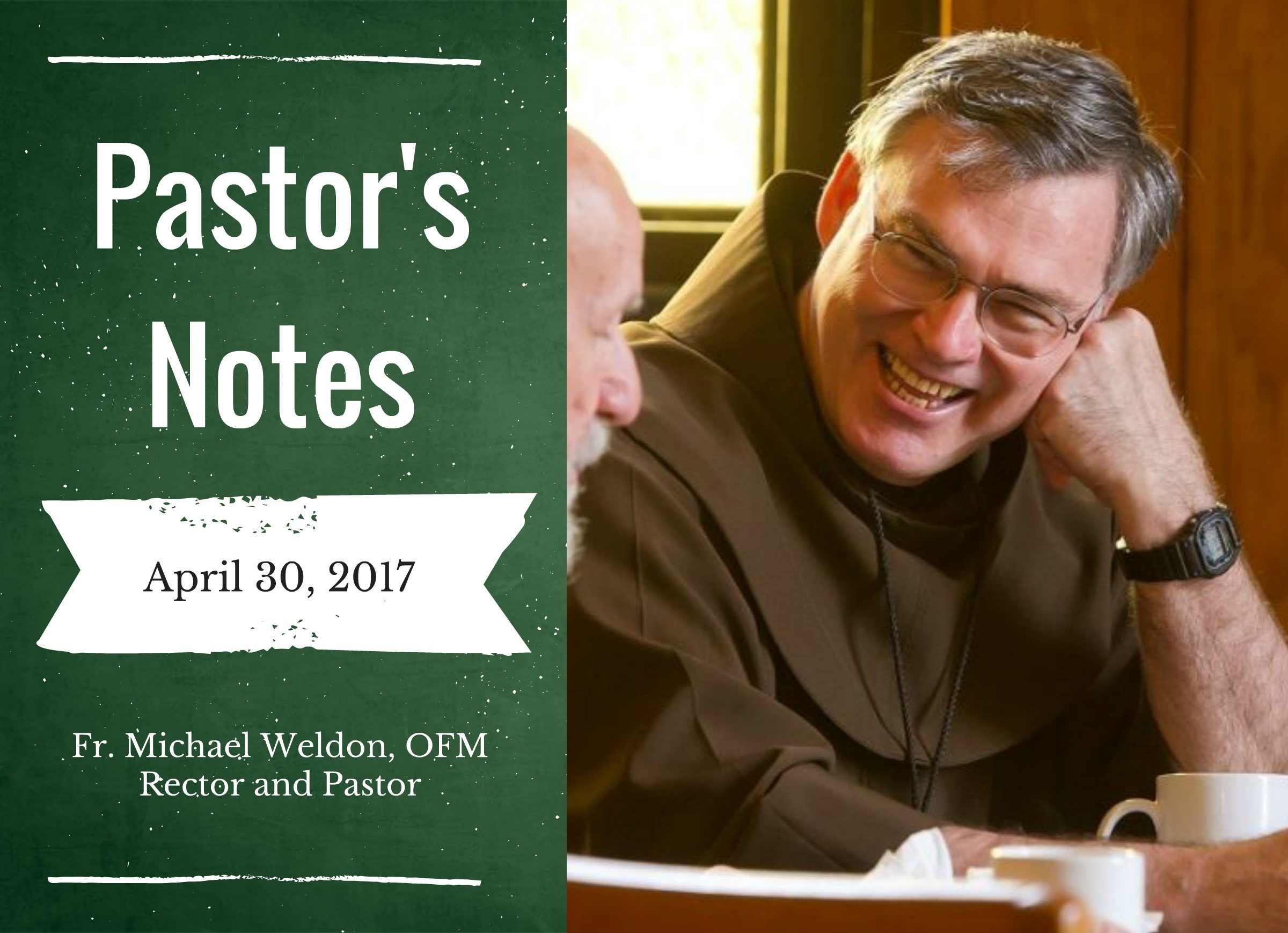St. Mary's Basilica
Phoenix, Arizona
Pastor’s Notes

Heart Burn? What do you do with it?
I have struggled with heartburn for much of my life. “Acid reflux” is the clinical diagnosis. St. Luke’s most tender story resurrection story… the road to Emmaus was written for people with the spiritual side of that affliction -“bitterness.” They were two disappointed people, most likely a married couple, Cleopas and his wife. They head out of Jerusalem as fast as their terrified feet will travel. After the cruel crucifixion of one on whom they attached their hopes, several women who had been at the foot of the cross at Jesus death and its placement in a nearby tomb claimed a vision. The body was missing! Two men in “dazzling clothes” told them that Jesus had risen. That was over the top for them and our heroes left town. Salvation was in the other direction.
Peter ran to the tomb, saw the linen cloths and was “amazed.” Up to this point in Luke Jesus has not appeared to the disciples in the upper room. All they had was just an empty tomb and two dazzling creatures. The Gospel was written about 50 years after the Easter experience. The text wrestled with the question, “How is the resurrected Christ in our midst now? Where shall we look for and find him?” We’re still asking that question.
“We were hoping that…,” they tell the stranger who has joined them on the road. Things had not turned out the way they had hoped. They seldom do for us as well. In Luke and then later in Acts, “the breaking of the bread” is a term used for the Eucharist. The risen Lord is present to us in the celebration of the Eucharist when we gather to receive Christ in his Word and Sacrament. Like the two on the road, we don’t normally get the extraordinary appearances of Christ the disciples did in the upper room. Nor does Christ appear to us as he did to Thomas, inviting us to touch his wounds. Luke tells us that each time we gather to break open the Scriptures and break the bread in Jesus’ name, he is as present to us as he was in the upper room and to the Emmaus travelers.
The documents of Vatican II tell us that the Risen One is present to us in five ways in the liturgy: in the Eucharistic elements, in the Proclaimed Word, in the Ordained minister, in the other sacraments of Baptism, Penance, Marriage and the Anointing of the Sick and finally in the gathered assembly. We, the broken body of Christ, are his presence for the world’s travelers. Jesus interrupted the disappointed depressed disciples as they journeyed down the road. He does it for us when we feel defeated or inadequate.
The heartburn signifies that he is close, even intimate. No medication is necessary, just “metanoia”… brings him to heart and we find the courage to give witness. It turns us around back to Jerusalem. And off we go to meet the rest of the assembly gathered by the Risen Lord.
Happy Easters again. “Felices Pascuas!”
A gentle week.
Fr. Michael Weldon, OFM
Acknowledgement is given to Fr. Jude Siciliano, OP, “FIRST IMPRESSIONS” for 3rd SUNDAY OF EASTER
